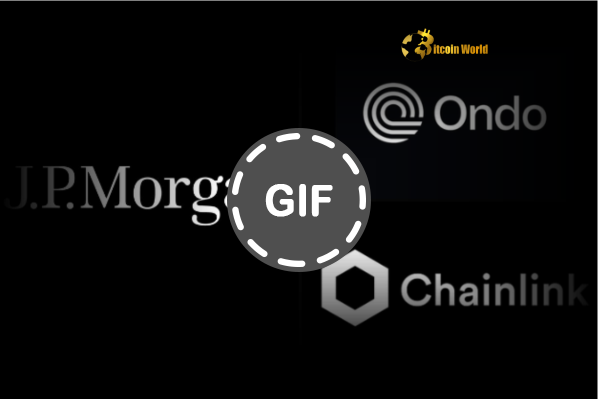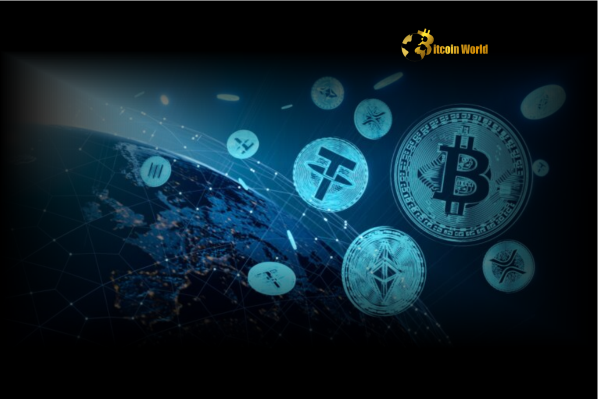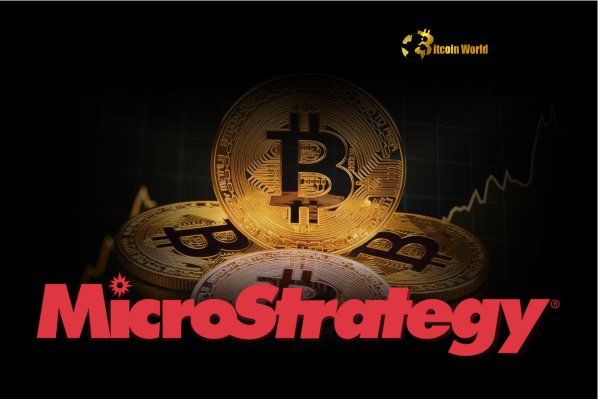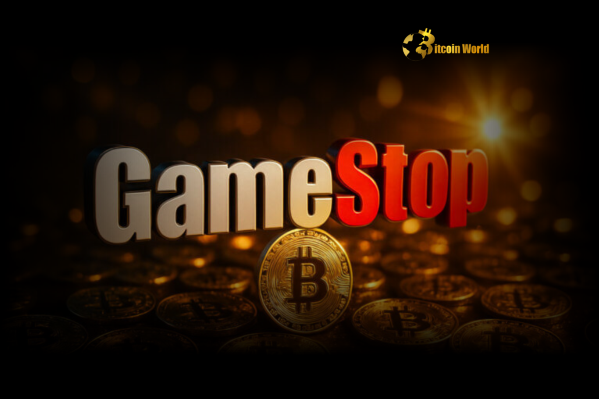BitcoinWorld

Chainlink, JPMorgan, Ondo Finance Achieve Breakthrough in Crosschain DvP Settlement
In a move signaling a significant step towards the convergence of traditional finance and decentralized finance, Chainlink, JPMorgan’s Kinexys, and Ondo Finance have successfully completed a pioneering test. This collaboration focused on achieving crosschain delivery versus payment (DvP) settlement, a critical function for the future of digital assets and asset tokenization.
What Happened: The Chainlink, JPMorgan, and Ondo Finance Collaboration
The core of this groundbreaking test involved settling a transaction across two distinct networks: a permissioned network representing traditional finance infrastructure (JPMorgan’s Kinexys Digital Payments) and a public testnet representing decentralized finance (Ondo Chain testnet). The goal was to demonstrate that assets and payments could be exchanged simultaneously and securely between these disparate environments.
This wasn’t just a theoretical exercise. It was a practical demonstration of how tokenized assets, potentially held on a public blockchain or a DeFi-centric network like Ondo Chain, could be exchanged for tokenized payments or stablecoins residing on a permissioned, institutional-grade network like Kinexys, all in a single, atomic transaction.
Why is Crosschain DvP Important?
Delivery versus Payment (DvP) is a standard settlement mechanism in traditional financial markets. It ensures that the delivery of securities (like stocks or bonds) only occurs if the corresponding payment is received, and vice-versa. This eliminates settlement risk, which is the risk that one party delivers their asset but does not receive the payment, or vice versa.
In the world of blockchain and tokenized assets, enabling DvP settlement across different networks (crosschain) is crucial for several reasons:
- Risk Reduction: Eliminates the need for trust between parties settling on different chains. No party is exposed to the risk of losing their asset or payment without receiving the other side of the trade.
- Increased Efficiency: Automates the settlement process, potentially reducing time and costs compared to traditional methods which often involve multiple intermediaries and manual steps.
- Enabling Liquidity: Allows assets residing on one chain to be easily and safely traded for payments or assets on another chain, improving overall market liquidity.
- Supporting Asset Tokenization: Provides a secure and reliable method for settling trades of tokenized real-world assets (like real estate, equities, or bonds) against digital currencies or stablecoins held on different platforms.
JPMorgan’s Role: Kinexys and Traditional Finance Integration
JPMorgan, a global leader in financial services, is actively exploring the potential of blockchain technology through initiatives like Onyx and its Kinexys platform. Kinexys Digital Payments represents JPMorgan’s infrastructure for wholesale payments using distributed ledger technology. Their participation in this test highlights the growing interest from major financial institutions in leveraging blockchain for core functions like payments and settlements.
JPMorgan’s involvement underscores the critical need for interoperability between the highly regulated, permissioned environments favored by traditional finance and the more open, public blockchain networks where many digital assets and potential innovations reside. This test shows a practical pathway for bridging this gap, allowing institutional liquidity and assets within systems like Kinexys to interact safely with the broader digital asset ecosystem.
Ondo Finance: Bridging the Gap with DeFi and Asset Tokenization
Ondo Finance is a key player in the decentralized finance (DeFi) space, particularly focused on bringing traditional financial assets and structures onto the blockchain. They specialize in creating tokenized financial products, aiming to bridge the gap between institutional finance and DeFi protocols. The Ondo Chain testnet served as the public network in this collaboration, representing the environment where tokenized assets could potentially reside.
Ondo Finance’s participation is vital as they represent the side of the equation focused on creating and managing tokenized assets and interacting with public blockchain infrastructure. Their expertise in tokenization and DeFi protocols complements JPMorgan’s traditional finance strength, making this a powerful partnership for demonstrating the potential of crosschain settlements for tokenized real-world assets.
Chainlink’s Contribution: Powering Interoperability
At the heart of enabling the communication and coordination between JPMorgan’s permissioned Kinexys network and the Ondo Chain testnet was Chainlink’s technology. Specifically, the test utilized Chainlink’s Cross-Chain Interoperability Protocol (CCIP) and its Runtime Environment (CRE).
Chainlink CCIP is designed to provide a secure and reliable way for applications and token transfers to move across different blockchain networks. The Runtime Environment allows for complex computations and logic to be executed off-chain in a verifiable manner, which is crucial for coordinating actions like a DvP settlement across disparate systems that cannot directly communicate.
Chainlink acted as the crucial middleware, enabling the atomic swap logic – ensuring that the ‘delivery’ on one network and the ‘payment’ on the other network happened simultaneously or not at all. This capability is fundamental for building robust crosschain financial applications and is a core reason why Chainlink is seen as vital infrastructure for the future of finance.
Benefits of This Breakthrough
This successful test opens the door to numerous potential benefits for the financial industry and the broader digital asset ecosystem:
- Enhanced Efficiency: Streamlines settlement processes, reducing time from days to potentially minutes or seconds.
- Reduced Counterparty Risk: The atomic nature of DvP eliminates the risk of one party failing to deliver after the other has performed their part.
- Increased Liquidity: Makes it easier to trade assets across different platforms and networks, boosting market depth.
- New Financial Products: Enables the creation of innovative financial instruments and markets involving tokenized assets settled crosschain.
- Improved Capital Utilization: Faster settlement frees up capital that would otherwise be tied up in lengthy settlement cycles.
- Bridging TradFi and DeFi: Provides a practical blueprint for how traditional financial institutions can safely interact with public blockchain networks and tokenized assets.
Challenges and the Road Ahead
While this test is a significant success, it’s important to acknowledge that challenges remain before crosschain DvP settlement becomes commonplace in mainstream finance. These include:
- Regulatory Clarity: The regulatory landscape for tokenized assets and crosschain transactions is still evolving in many jurisdictions.
- Scalability: Ensuring these systems can handle the volume and speed required for global financial markets.
- Security: Maintaining high levels of security when interacting across different network architectures.
- Standardization: Developing common standards and protocols for tokenized assets and crosschain communication.
- Integration Complexity: Integrating these new technologies with existing legacy financial systems.
Despite these hurdles, the successful collaboration between Chainlink, JPMorgan, and Ondo Finance demonstrates that the core technological challenges of crosschain DvP are being addressed. This test moves the industry closer to a future where tokenized assets can be freely and safely exchanged across diverse digital platforms.
What Does This Mean for Asset Tokenization?
Asset tokenization, the process of issuing digital tokens on a blockchain that represent ownership of real-world assets, is widely seen as a major trend for the coming years. However, for tokenization to reach its full potential, the ability to trade and settle these tokenized assets efficiently and securely is paramount.
The Chainlink, JPMorgan, and Ondo Finance test is a crucial piece of the puzzle for asset tokenization. By demonstrating secure crosschain DvP, they are building the necessary infrastructure layer that allows tokenized assets held on one type of network (e.g., a public chain for liquidity and transparency) to be seamlessly settled against payments or other assets on a different type of network (e.g., a permissioned network for institutional control and privacy). This unlocks the potential for a much wider range of participants and assets to enter the tokenized ecosystem.
Summary: A Glimpse into the Future of Finance
The successful crosschain DvP settlement test involving Chainlink, JPMorgan, and Ondo Finance is more than just a technical achievement; it’s a powerful proof of concept for the future of finance. By effectively bridging a traditional finance network with a public testnet using Chainlink’s interoperability solutions, these entities have demonstrated a viable path for secure, efficient, and risk-mitigated settlement of digital assets across different blockchain environments. This collaboration significantly advances the capabilities required for widespread asset tokenization and paves the way for a more interconnected and efficient global financial system.
To learn more about the latest asset tokenization trends, explore our article on key developments shaping asset tokenization institutional adoption.
This post Chainlink, JPMorgan, Ondo Finance Achieve Breakthrough in Crosschain DvP Settlement first appeared on BitcoinWorld and is written by Editorial Team





